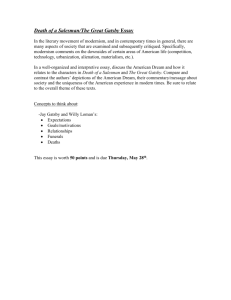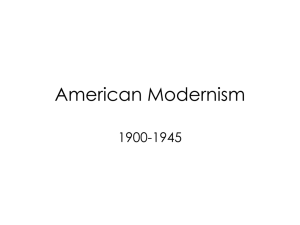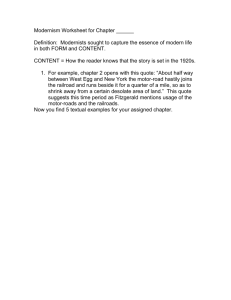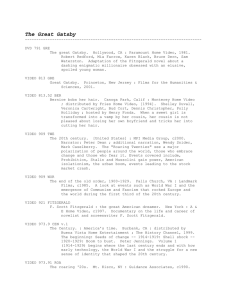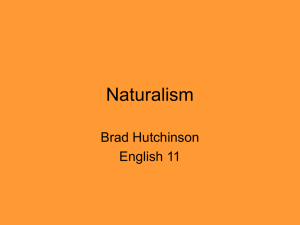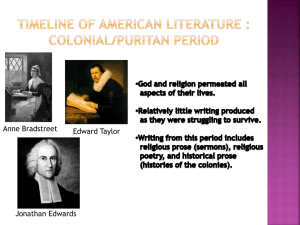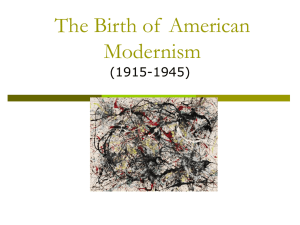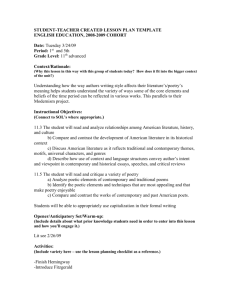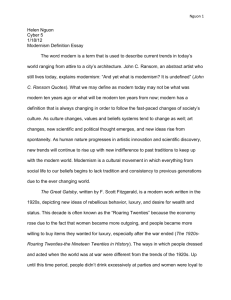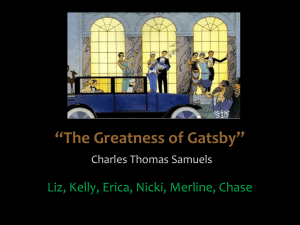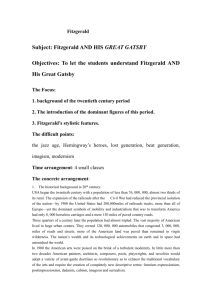NATURALISM, MODERNISM, AND THE GREAT GATSBY
advertisement
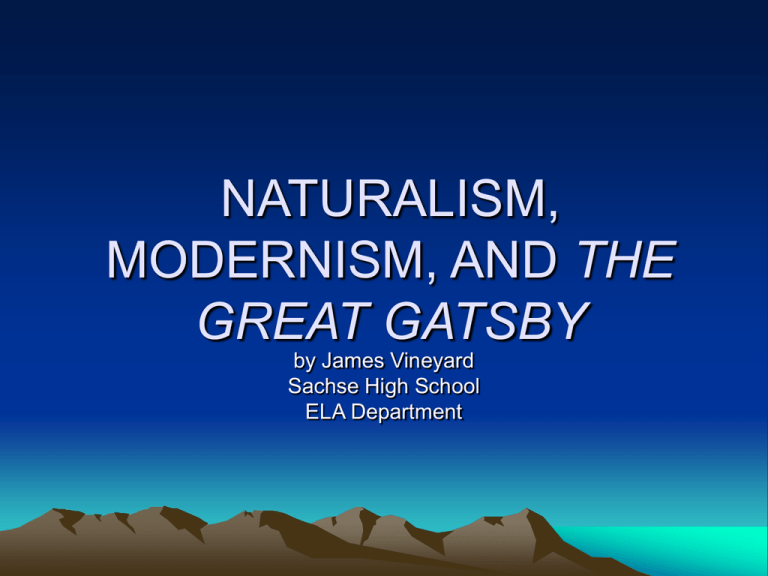
NATURALISM, MODERNISM, AND THE GREAT GATSBY by James Vineyard Sachse High School ELA Department NATURALISM from “Naturalism in American Literature,” www.guweb2.gonzaga.edu/faculty/campbell/enl413/natural.htm • A subsection of Realism • Humans are studied according to their surroundings • Characters are lower-class, ruled by heredity, passion, and instinct • Cannot exercise free will, as forces beyond character’s control limit options • Frequently in urban settings NATURALISM • Themes: • The “brute within” • The fight for survival in an indifferent universe • Nature is an indifferent force acting on human beings • The forces of heredity and environment afflict humanity NATURALISM • • • • • Authors: Frank Norris Stephen Crane Jack London Edith Wharton STREAM OF CONSCIOUSNESS • A literary technique in which the author uses narrative that reflects the thought patterns of a character • Events are often disjointed, nonsensical, and non-chronological • Developed in late nineteenth century; utilized more in twentieth century MODERNISM from “Perspectives in American Literature—A Research and Reference Guide,” www.csustan.edu/english/reuben/pal/chap7/7intro.html • • • • The first true twentieth century movement Disruption of traditional syntax and form International perspective The artist is more heroic than the average person • The artist challenges tradition and breaks away from it MODERNISM • Democratic and elitist • Traditional and non-traditional • Freer expression of sexual and political views • Dramatizes the plight of women • Creation of literature that reflects the urban experience • Alienation leads to self-discovery MODERNISM • Themes: • Socialist influences: the good of the collective vs. the individual • The Jazz Age • Women’s suffrage • Prohibition • The stock market crash and Great Depression MODERNISM • • • • • • • • • Authors: Ezra Pound John Steinbeck F. Scott Fitzgerald The Harlem Renaissance Dorothy Parker T.S. Eliot William Faulkner Ernest Hemingway THE GREAT GATSBY • Published in 1925 • Examination of the Jazz Age • Criticism of adhering to false materialistic values • Cynical; an example of the bitterness of the Lost Generation THE GREAT GATSBY • • • • • • Themes: The American Dream The individual vs. society Appearance vs. Reality The loss of innocence Inability to attain material fulfillment F. SCOTT FITZGERALD from “Novel Guide: The Great Gatsby,” www.novelguide.com/thegreatgatsby/biography.html • Born in 1896 as Francis Scott Key Fitzgerald • Served in the army after leaving Princeton in 1917; discharged in 1919 • Published This Side of Paradise when only 23. • Unable to become wealthy from writing; moved to Hollywood to write screenplays • Died at the age of 44 of a heart attack F. SCOTT FITZGERALD IMAGERY • The word pictures writers create to evoke an emotional response • Often tied to sensory details: sight, sound, taste, touch, smell • Prominent mode of communication in Gatsby IMAGERY • • • • • • • Common images in Gatsby: Eyes Sun/heat/fire Ashes Ghosts Music Colors
